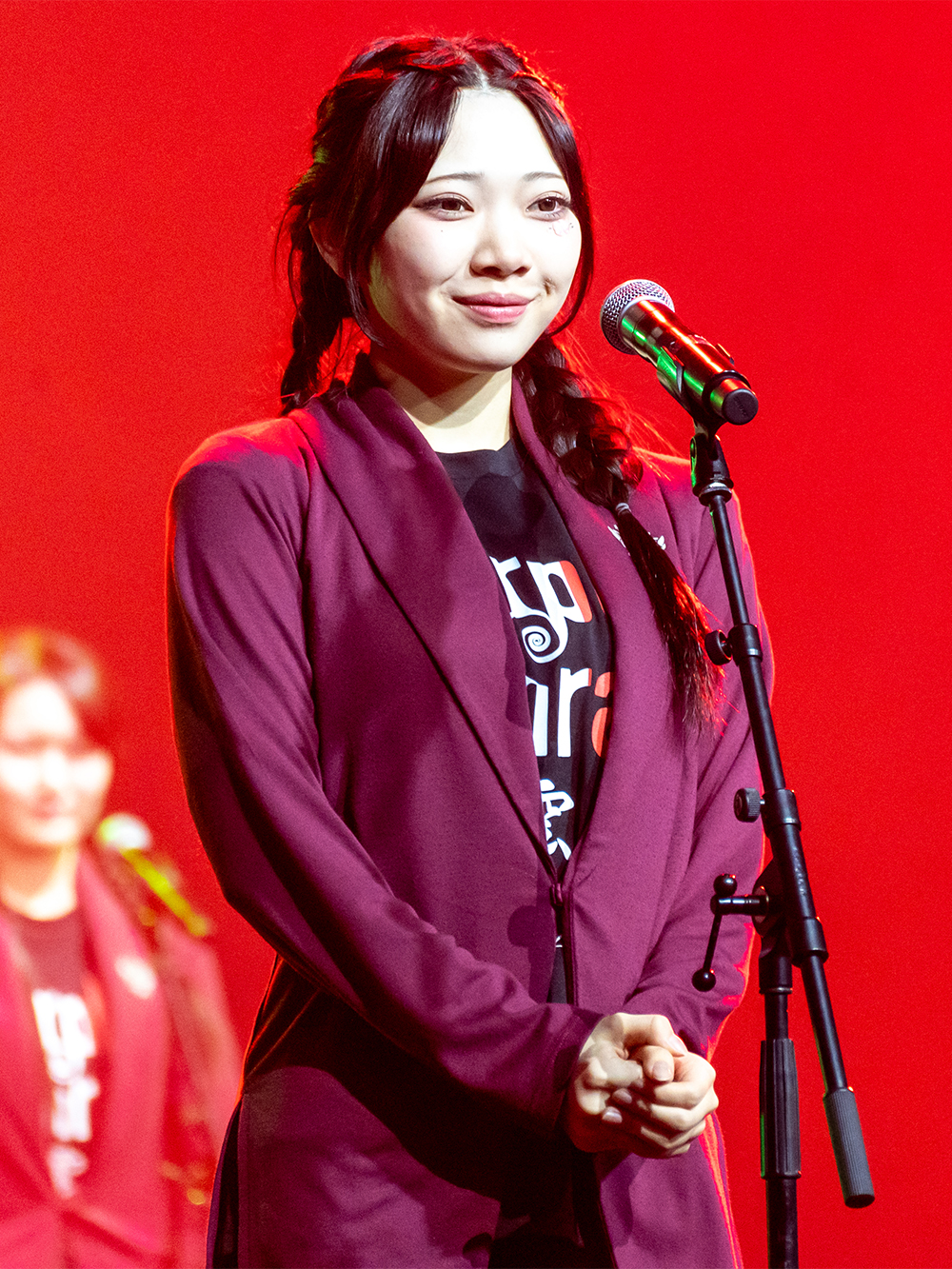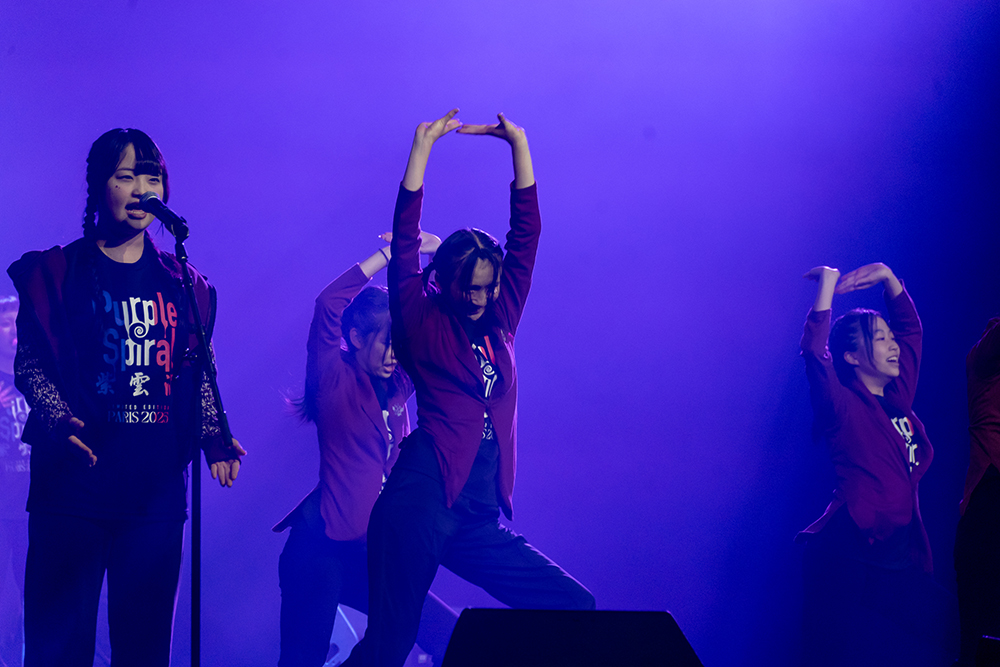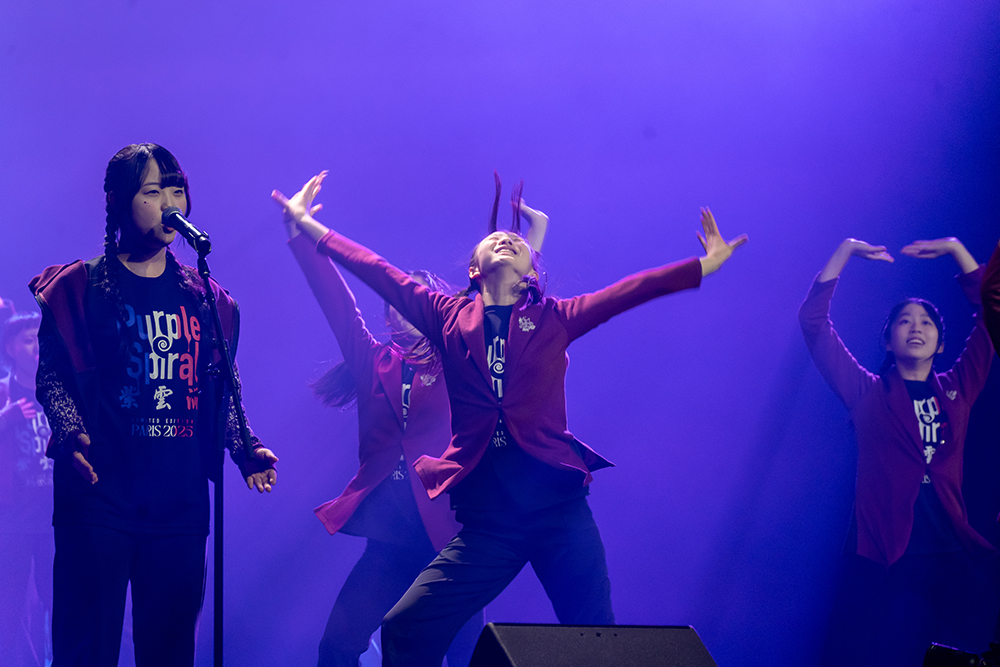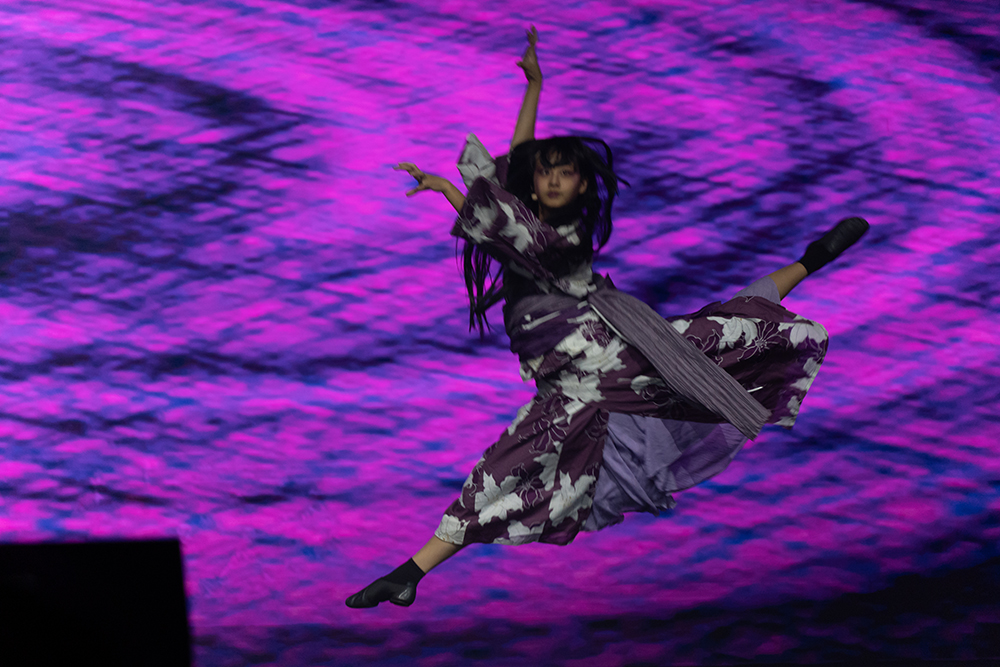Festivals - Japan Expo 2025 : Purple Spiral Shunka – A Mesmerizing Descent Into Musical Horror
By Mulder, Villepinte, Parc des Expositions, 05 july 2025

At this year’s Japan Expo, held at the bustling Parc des Expositions in Villepinte from July 4 to 7, one performance stood out as a bold, spine-tingling experiment in youth theatre: Purple Spiral – Shunka, a horror-themed musical staged by Youth Theatre Japan. This original creation wasn’t just another pop-culture showcase or a typical idol dance number—it was a full-fledged theatrical descent into the macabre, fusing traditional Japanese horror with youthful energy, elaborate choreography, and emotionally charged live music. Directed by Mamoru Ueki, scored by composer Junichi Matsuda, and penned by screenwriter Ryota NGSK, the performance aimed straight for the audience’s deepest fears—those irrational anxieties rooted in childhood, folklore, and the uncanny. It managed to make quite a few hearts skip a beat.
The story revolves around Kanna, a seemingly ordinary high school girl who harbors an intense fear of dolls—no small matter considering she was raised in a temple that preserves them. This subtle nod to the Japanese tradition of ningyō (spiritual dolls) adds a cultural depth that only amplifies the creepiness. The plot takes a chilling turn when Kanna brings a grotesque, malformed doll to school. What starts as a minor discomfort quickly spirals into body horror, with Kanna undergoing a disturbing metamorphosis. The horror escalates as a violet-hued spiral-shaped cloud forms over the school and her classmates descend into a crazed, dance-like hysteria. The only ones seemingly unaffected are her childhood friends Sora and Miho, who are left to make sense of a nightmare that dances with them instead of creeping in silence. The script is layered with allegory and anchored in a Japanese sense of dread, evoking classic kaidan (ghost stories) while remaining relevant to a teen audience.

What truly set this production apart was its aesthetic and performative boldness. Under the direction of Mamoru Ueki, the staging used minimal props but maximal lighting and sound to conjure dread. Violet strobe lights mimicked the "spiral cloud," and shadow projections enhanced the idea of a transforming world. Audience members recounted moments when they gasped aloud—not only because of the sudden horror reveals, but due to the powerful commitment of the young performers. Particularly moving was a sequence in which Kanna’s inner monologue was sung against an eerie, minimalist piano piece composed by Junichi Matsuda, who clearly understands that silence, when juxtaposed with carefully measured notes, can be more unsettling than noise. The musical score elevated the emotional stakes, with haunting melodies weaving seamlessly into choreographed movements that were both beautiful and terrifying.
Behind the scenes, Ryota NGSK’s script stood out for its clever pacing and psychological tension. While horror is notoriously difficult to pull off in a live setting—especially in a musical—his writing balanced surreal horror with deeply human fears, like isolation, peer pressure, and losing control of one’s body and mind. Anecdotal buzz from attendees who caught the earliest showings indicated that many were reminded of Junji Ito’s “Uzumaki” or the eerie atmosphere of Satoshi Kon’s work, although Purple Spiral – Shunka retained a voice of its own. In interviews and post-show panels, audience members praised the cast’s intensity and the originality of a horror story that dared to diverge from the usual cheerful, pop-colored performances Japan Expo is known for.

This new direction for Youth Theatre Japan feels like a confident step toward more ambitious productions. While the troupe is already known for nurturing talented young performers, Purple Spiral – Shunka proves they’re unafraid to push boundaries. The horror genre, rarely tackled in youth musicals, was treated with respect and complexity. Rather than relying on cheap thrills, the team drew from cultural roots and contemporary anxieties to deliver a show that lingered long after the final curtain. Even seasoned Japan Expo attendees admitted they hadn't seen anything quite like it. The bold narrative direction, the disturbing but evocative doll imagery, and the spiraling descent into madness captured in dance and voice all created an unforgettable experience.
Visually, the performance was documented by photographer Boris Colletier for Mulderville, whose striking images of the cast in costume—alongside violet-tinged lighting and exaggerated facial expressions frozen mid-dance—helped capture the show’s unique aesthetic for those who missed it. The full gallery, accessible at Mulderville’s photo archive, provides a fascinating behind-the-scenes look at the production’s power and scale.

In a year where Japan Expo leaned heavily into the horror genre, Purple Spiral – Shunka wasn’t just a well-executed theme piece—it became a symbol of creative risk-taking, cultural introspection, and the unrelenting spirit of youth performance. It’s not often you leave a musical contemplating your childhood fears, questioning the meaning of transformation, and wondering if your old dolls are really just toys. That’s the magic, and terror, of Purple Spiral – Shunka.
You can discover our photos in our Flickr page
Photos : Pierre Champion / Mulderville

